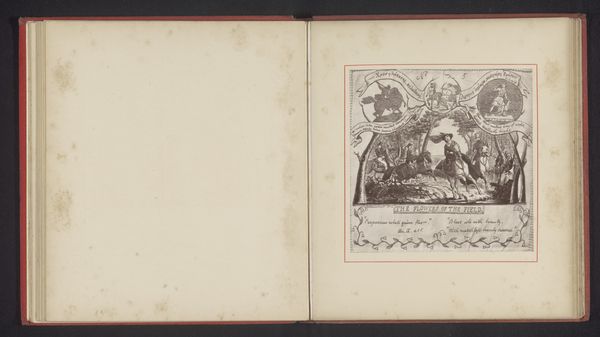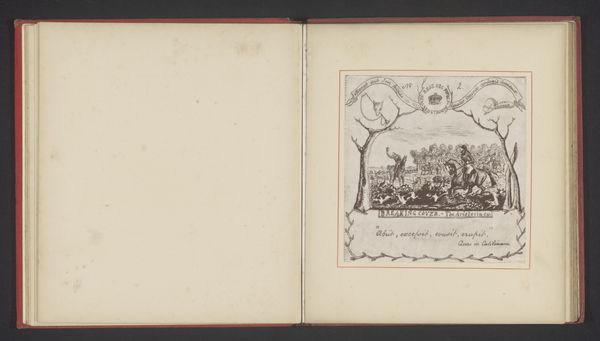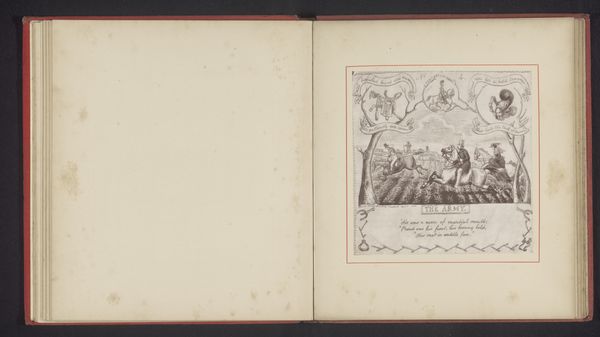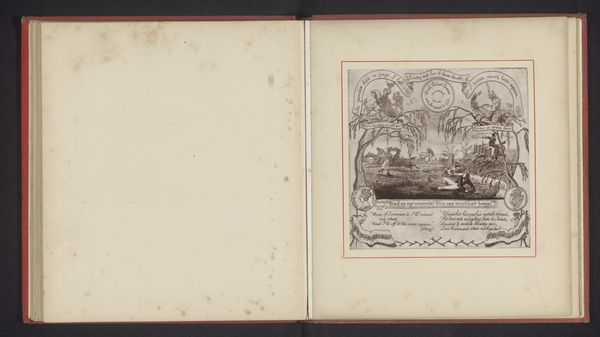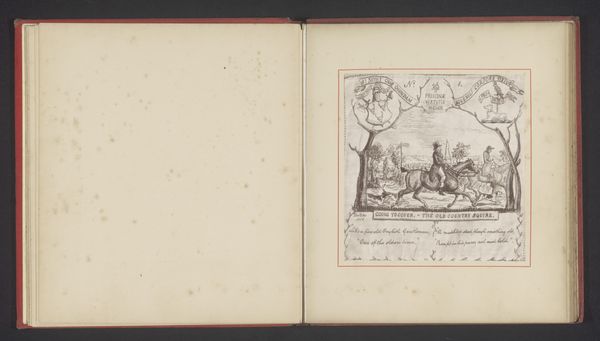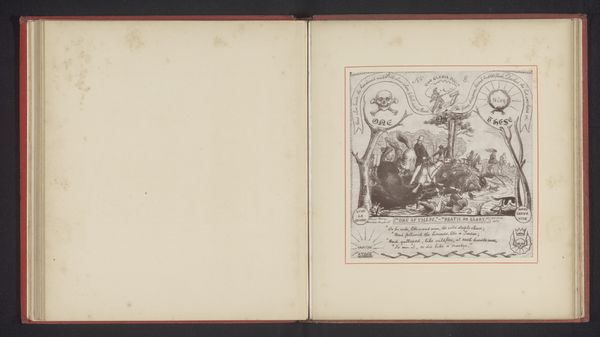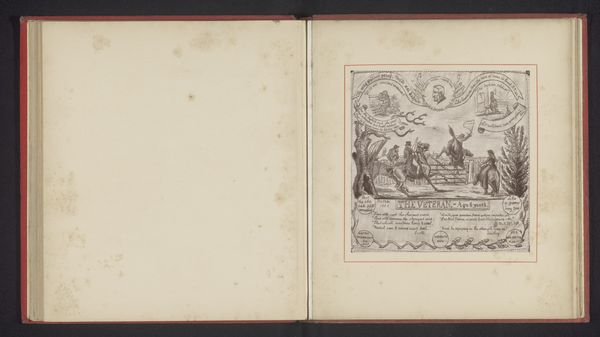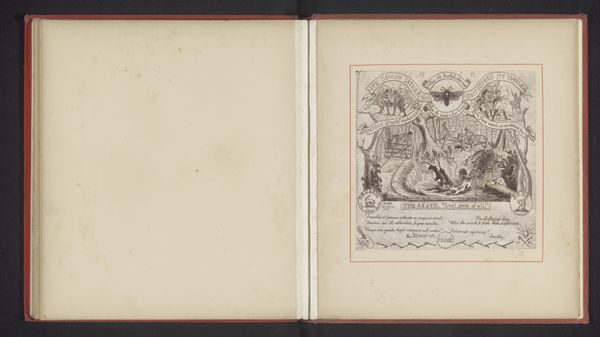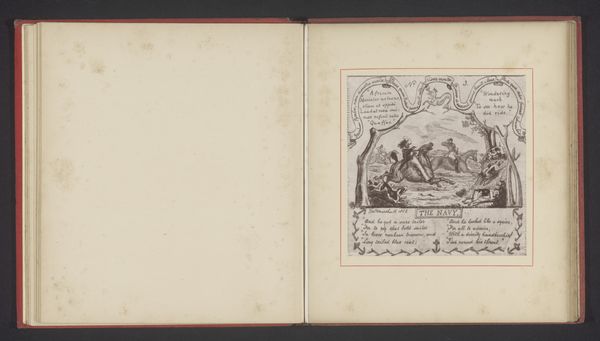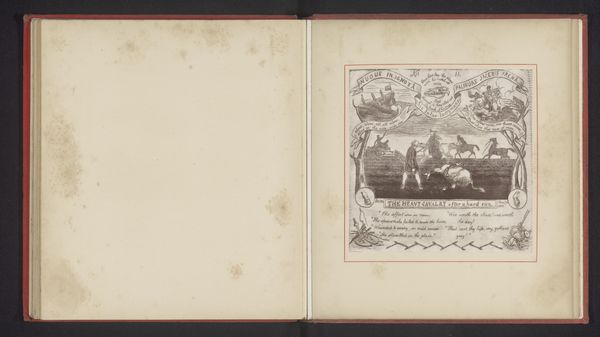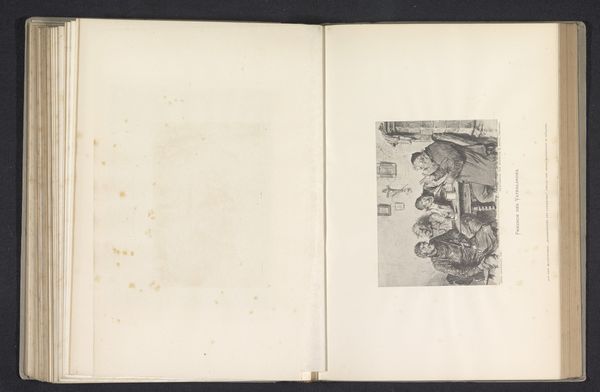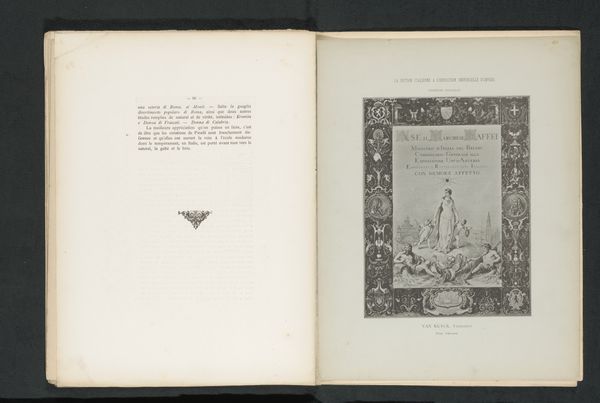
Fotoreproductie van een tekening door Thomas Mervyn Bouchier Marshall, voorstellend mensen te paard omringt door wapenschilden before 1885
0:00
0:00
drawing, paper, ink
#
drawing
#
narrative-art
#
landscape
#
paper
#
ink
Dimensions: height 165 mm, width 163 mm
Copyright: Rijks Museum: Open Domain
Curator: Let's consider this drawing, made before 1885, a reproduction of a work by Thomas Mervyn Bouchier Marshall. It depicts people on horseback amidst heraldic shields. What catches your eye? Editor: Instantly, the dynamism! It's as if the scene is bubbling with suppressed energy—the horses splashing through the water, the little poems scrawled around the image… it feels both meticulously planned and strangely whimsical. Curator: Indeed. The image pulsates with layers of meaning, as the animals themselves are icons representing virtues such as courage, loyalty, and nobility—the horse pre-eminently so. These traits are augmented through the surrounding shields as well. The scene suggests movement across a boundary of transition and the idea of leaving the familiar and seeking something beyond. Editor: That makes me think about "crossing the Rubicon," that daring move in history… Though it has a fairytale vibe too, you know, that sense of perilous journey and adventure, with symbolic animals leading the charge. I'm quite charmed by the way he places the image inside a frame, then embellishes everything with words and decorative objects that have narrative weight as well. Curator: It's a landscape, really, designed to tell a particular kind of story and establish a particular reading of history and self-understanding. Landscape imagery allowed artists to distill these principles as they became meaningful in daily life and national consciousness. So many landscapes incorporate emblems into the image or heraldry into its border or composition! Editor: You know, looking closer, I wonder if the rather old-fashioned heraldry and its references indicate some subtle humor or irony by the artist, given the overall composition and playful line. Perhaps he wanted to question such values… Curator: A possibility worth entertaining, given the context of when this was produced, toward the end of a century grappling with rapidly shifting cultural touchstones. We can almost hear that gentle mocking echo here, especially since reproduction was also taking place at unprecedented rates... It seems to encourage a complex appreciation. Editor: I like that so much: a call for appreciation and thoughtfulness! Thank you; that opened a new portal into the image for me.
Comments
No comments
Be the first to comment and join the conversation on the ultimate creative platform.
